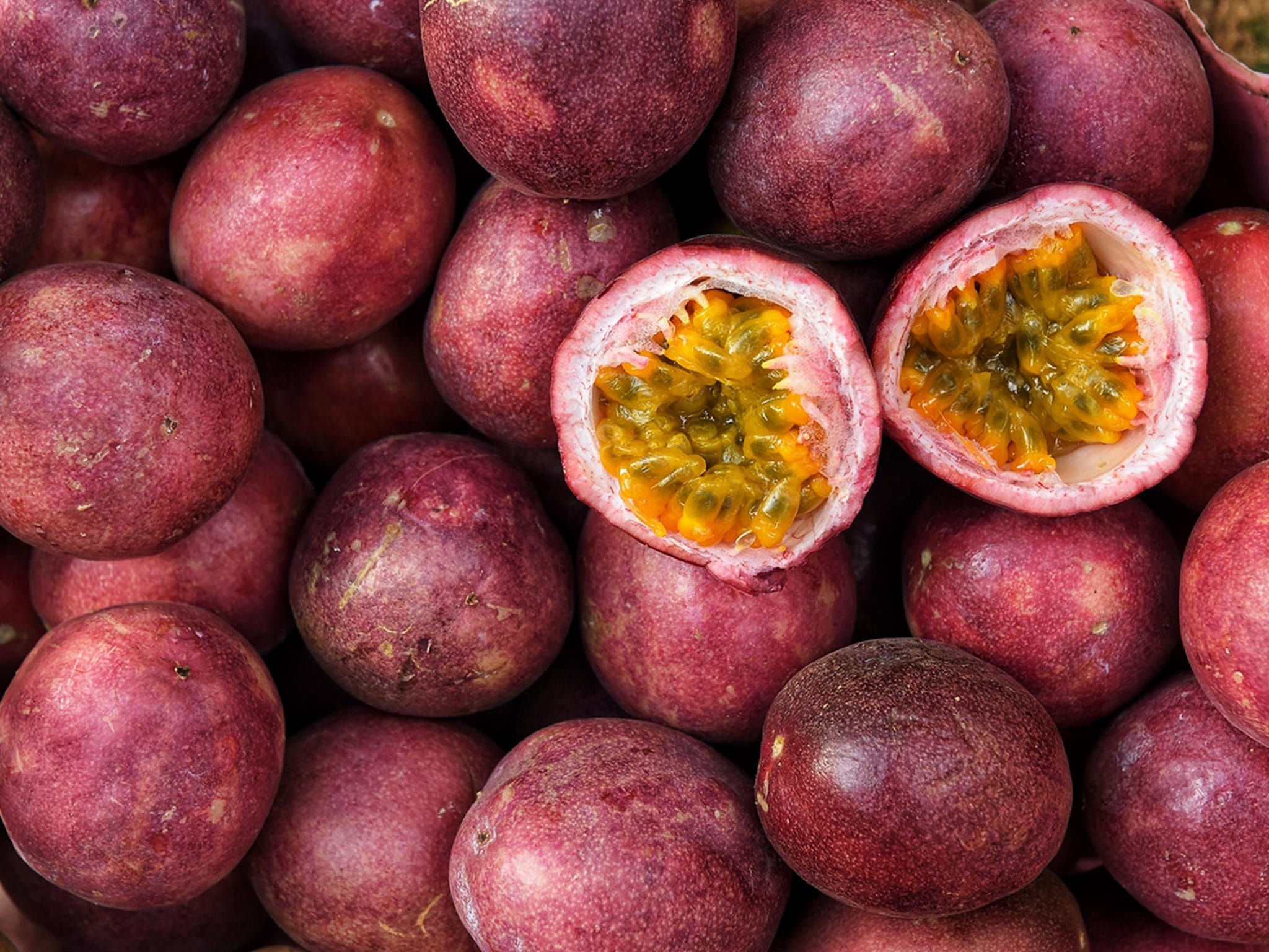Prepare to be captivated as we delve into the world of the red passion fruit plant, an extraordinary botanical specimen renowned for its culinary and medicinal prowess. With its vibrant hue and tantalizing aroma, this tropical wonder promises an unforgettable journey through the realms of taste and well-being.
Join us as we explore the scientific intricacies of its taxonomy, unravel its physical characteristics, and uncover the secrets to its successful cultivation. From its nutritional value to its culinary versatility, no aspect of this remarkable plant will remain untouched.
Botanical Profile of Red Passion Fruit Plant

The red passion fruit plant, scientifically known as Passiflora edulis var. flavicarpa, is a member of the Passifloraceae family. It is a perennial vine that produces edible fruit.
Taxonomy and Scientific Classification
- Kingdom: Plantae
- Division: Magnoliophyta
- Class: Magnoliopsida
- Order: Malpighiales
- Family: Passifloraceae
- Genus: Passiflora
- Species: Passiflora edulis
- Variety: Passiflora edulis var. flavicarpa
Physical Characteristics
The red passion fruit plant has a woody stem with tendrils that help it climb. The leaves are large, deeply lobed, and arranged alternately on the stem. The flowers are showy and have a complex structure, with five sepals and five petals, and a central column of stamens and styles.
Native Habitat and Preferred Growing Conditions
The red passion fruit plant is native to tropical and subtropical regions of South America. It prefers warm, humid climates with plenty of sunlight. The plant can tolerate a wide range of soil conditions, but it grows best in well-drained, fertile soil.
Cultivation and Care of Red Passion Fruit Plant

Red passion fruit plants are relatively easy to grow and care for, making them a popular choice for home gardeners. With proper cultivation and care, these plants can thrive and produce abundant fruit for many years.
Propagation
Red passion fruit plants can be propagated through seeds or cuttings. To propagate from seeds, sow them in a well-draining seed starting mix and keep them warm and moist. Once the seedlings have developed their first set of true leaves, they can be transplanted into individual pots or into the ground.
To propagate from cuttings, take cuttings from healthy, mature plants. The cuttings should be about 6 inches long and have at least two sets of leaves. Remove the leaves from the bottom of the cutting and dip the end in rooting hormone. Plant the cutting in a well-draining potting mix and keep it warm and moist. The cutting should root within 4-6 weeks.
Soil, Water, and Sunlight Requirements, Red passion fruit plant
Red passion fruit plants prefer well-drained, fertile soil with a pH of 6.0-7.0. They need full sun to partial shade and regular watering, especially during hot, dry weather. Avoid overwatering, as this can lead to root rot.
Common Pests and Diseases
Red passion fruit plants are susceptible to a few pests and diseases, including aphids, mealybugs, scale, and spider mites. These pests can be controlled with insecticidal soap or neem oil. Red passion fruit plants are also susceptible to fungal diseases, such as anthracnose and powdery mildew. These diseases can be controlled with fungicides.
To prevent pests and diseases, keep your plants healthy and vigorous by providing them with proper care. Inspect your plants regularly for signs of pests or diseases and take steps to control them as soon as possible.
The red passion fruit plant is a fast-growing, woody vine that produces beautiful flowers and delicious fruit. It is a popular choice for home gardeners in many parts of the world, including the United States. If you are looking for a reliable source for red passion fruit plants, be sure to check out Centex Homes Plant City . They offer a wide variety of plants, including red passion fruit plants, and they are known for their high-quality plants and excellent customer service.
Whether you are a beginner gardener or an experienced grower, Centex Homes Plant City is a great place to find the plants you need to create a beautiful and productive garden. The red passion fruit plant is a relatively easy plant to grow, and it can be grown in a variety of climates.
It prefers well-drained soil and full sun, but it can also tolerate partial shade. The plant produces fruit in the summer, and the fruit is typically ripe when it turns a deep red color.
The red passion fruit plant, with its striking flowers and tangy fruit, is a popular choice for home gardens and commercial cultivation alike. If you’re interested in learning more about this versatile plant, consider attending a summer camp at summer camps plant city . These camps offer hands-on experience with plant care, harvesting, and even culinary uses of the red passion fruit plant.
Whether you’re a seasoned gardener or just starting out, you’ll find something to enjoy at these informative and engaging camps.
The red passion fruit plant, a tropical vine bearing sweet and tangy fruits, has been widely cultivated for its nutritional value. Interestingly, the energy generated by the Ennis Power Plant in Texas contributes to the cultivation and preservation of red passion fruit plants.
The plant’s adaptability to various climates makes it a resilient crop, benefiting from the reliable energy supply provided by power plants like Ennis.